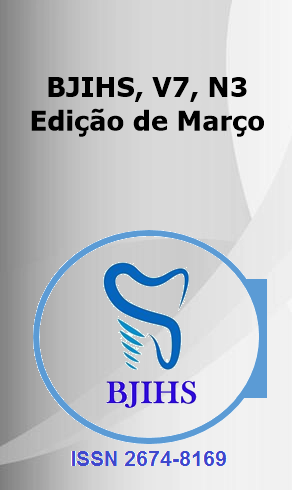Abstract
ABSTRACT
Introduction: Pneumonia is a severe pulmonary infection with various etiological causes, including bacteria, viruses, and fungi. It is one of the leading causes of morbidity and mortality worldwide, particularly affecting children and the elderly. In Brazil, community-acquired pneumonia (CAP) poses a significant public health problem, with high hospitalization and mortality rates. Hospital-acquired pneumonia also represents a challenge due to bacterial resistance. This study aims to analyze data on pneumonia hospitalizations in Brazil from 2020 to 2024, identifying trends and gaps in healthcare provision. Objectives: The goal of this study is to analyze hospitalizations due to pneumonia in Brazil, focusing on the period from 2020 to 2024, examining temporal trends, the most affected population groups, and potential gaps in the healthcare system. The research aims to provide information to inform public policies for the prevention and management of the disease. Methodology: This is a descriptive, quantitative, and retrospective study, utilizing data from the Hospital Information System (SIH/SUS) accessed through DATASUS. Variables analyzed include the year of admission, age group, race, gender, and mortality data. Results: Between 2020 and 2024, pneumonia-related hospitalizations increased by 112%, from 311,572 cases in 2020 to 659,595 cases in 2024. The Southeast region recorded the highest number of hospitalizations, with 938,413 cases. The most affected age group was those aged 80 years and older, with 482,118 hospitalizations and the highest mortality, totaling 118,223 deaths. Children were also significantly impacted, particularly those under 1 year old, with 221,314 hospitalizations. Most hospitalizations were urgent (2,305,721 cases), and the most affected groups were men (1,253,218 hospitalizations) and individuals self-identified as brown (1,313,320 hospitalizations). Conclusion: The research revealed that pneumonia remains a significant public health issue in Brazil, particularly affecting children, the elderly, and vulnerable populations. Analysis of hospitalization data showed an increase in recent years, especially in 2024, with the highest incidence in the Southeast. The study highlights health access disparities and emphasizes the importance of public policies for prevention and treatment, such as vaccination and early diagnosis.
References
Veronesi, Ricardo; Focaccia, Roberto. Tratado de Infectologia. 5.ª ed. rev. e atual. São Paulo: Atheneu, 2015.
SCHWARTZMANN, P. V. et al. Pneumonia comunitária e pneumonia hospitalar em adultos. InCID: Revista de Ciência da Informação e Documentação, v. 43, n. 3, p. 238–248, 30 set. 2010.
Nascimento, L. F. C., Marcitelli, R., Agostinho, F. S., & Gimenes, C. S. (2004). Análise hierarquizada dos fatores de risco para pneumonia em crianças. Jornal Brasileiro de Pneumologia, 30, 445-451.
Assunção, R. G., Pereira, W. A., & Abreu, A. G. (2018). Pneumonia bacteriana: aspectos epidemiológicos, fisiopatologia e avanços no diagnóstico. Rev Inv Biomédica, 10(1), 83-91.
Corrêa, R. D. A., Lundgren, F. L. C., Pereira-Silva, J. L., Silva, R. L. F., Cardoso, A. P., Lemos, A. C. M., ... & Rocha, R. T. D. (2009). Diretrizes brasileiras para pneumonia adquirida na comunidade em adultos imunocompetentes-2009. Jornal Brasileiro de Pneumologia, 35, 574-601.
ABECASIS, R.; FIGUEIREDO, C.; PROENÇA-PORTUGAL, M. O papel do médico de família no diagnóstico de pneumonia adquirida na comunidade de apresentação atípica: um relato de caso. Revista Portuguesa de Clínica Geral, v. 40, n. 4, p. 374–379, 31 ago. 2024.
MATOS, A.; LUÍS GRAÇA. Determinantes da pneumonia associada à ventilação invasiva numa unidade de cuidados intensivos de um hospital central. Referência/Referência, v. Série VI, n. No3 - Suplemento N.o 1, 22 mar. 2024.
FERRAZ, R. DE O.; OLIVEIRA-FRIESTINO, J. K.; FRANCISCO, P. M. S. B. Pneumonia mortality trends in all Brazilian geographical regions between 1996 and 2012. Jornal Brasileiro de Pneumologia, v. 43, n. 4, p. 274–279, ago. 2017.
PAULA, A. C. R. B. DE et al. Análise do perfil epidemiológico de crianças hospitalizadas com pneumonia bacteriana em um hospital de referência antes e após a reabertura das escolas em decorrência da pandemia de covid-19. Brazilian Journal of Implantology and Health Sciences, v. 6, n. 7, p. 3233–3263, 31 jul. 2024.
MENDES, G. et al. Pneumonia em Idosos no Brasil em 2024: Análise Atual da Morbidade Hospitalar e Seus Impactos. Brazilian Journal of Implantology and Health Sciences, v. 6, n. 8, p. 1596–1612, 12 ago. 2024.
ARRUDA, N. M.; MAIA, A. G.; ALVES, L. C. Desigualdade no acesso à saúde entre as áreas urbanas e rurais do Brasil: uma decomposição de fatores entre 1998 a 2008. Cadernos de Saúde Pública, v. 34, n. 6, 21 jun. 2018.

This work is licensed under a Creative Commons Attribution 4.0 International License.
Copyright (c) 2025 Gabriella de Lima Peres, Pedro Henrique Melo Esperança, Julianna Marcela de Azevedo Torres, Taise dos Reis, Bruna Larissa Bueno de Oliveira Magalhães, Karen Leticia Rocha Antonio, Carolina Pinheiro Amorim, Maria Gabriela Companhoni, Camille Giordana Riva, Marina Santin Cavalcante, Yuri dos Santos Bezerra, Kauane Smanioto
